From climate change to synthetic biology, today’s Earth is rife with phenomena that blur the boundary between nature and culture, between life and technology. Since the Industrial Revolution, the collective impact of environmental changes caused by humans has reached a degree to which it can now be identified in the sediments. Geologists from the International Commission on Stratigraphy (ICS) are responsible for deciding how the Earth’s history should be categorized into epochs and eras based on geological deposition in the earth. Each era must be clearly identified according to layers in the ground that are identical throughout the world. An ICS working group is currently examining evidence to decide whether we are living in a new, human-made era, the Anthropocene.
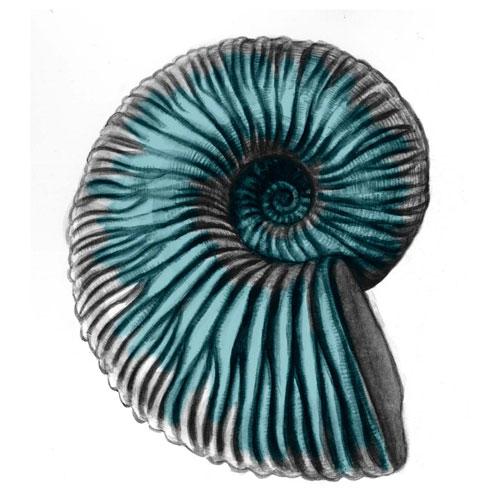
Geologic Eras
Nika Korniyenko
Geologic Eras
Nika Korniyenko
Drawn by Nika Korniyenko, 2014.
 This work is licensed under a Creative Commons Attribution-NonCommercial-NoDerivatives 4.0 International License.
This work is licensed under a Creative Commons Attribution-NonCommercial-NoDerivatives 4.0 International License.
Mass spectrometry and geological eras
Text and images by Nika Korniyenko
University of the Arts (UdK), Berlin

The Anthropocene
Mary Anning became a celebrity at the age of 15 months when she survived being hit by lightening.
The Anthropocene
Mary Anning became a celebrity at the age of 15 months when she survived being hit by lightening.
Drawn by Nika Korniyenko , 2014.  This work is licensed under a Creative Commons Attribution-NonCommercial-NoDerivatives 4.0 International License.
This work is licensed under a Creative Commons Attribution-NonCommercial-NoDerivatives 4.0 International License.

Mary’s familiy was very poor, so she collected fossiles at the coast and sold them to tourists.
Mary’s familiy was very poor, so she collected fossiles at the coast and sold them to tourists.
Drawn by Nika Korniyenko, 2014.
 This work is licensed under a Creative Commons Attribution-NonCommercial-NoDerivatives 4.0 International License.
This work is licensed under a Creative Commons Attribution-NonCommercial-NoDerivatives 4.0 International License.
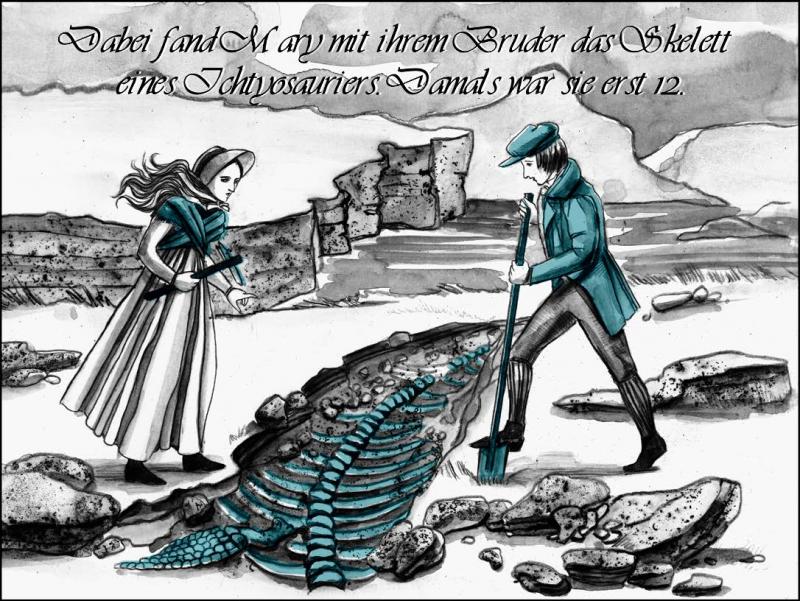
One day, Mary and her brother found the skeleton of a Ichtyosaurus. She was only 12 years old at the time.
One day, Mary and her brother found the skeleton of a Ichtyosaurus. She was only 12 years old at the time.
Drawn by Nika Korniyenko, 2014.
 This work is licensed under a Creative Commons Attribution-NonCommercial-NoDerivatives 4.0 International License.
This work is licensed under a Creative Commons Attribution-NonCommercial-NoDerivatives 4.0 International License.
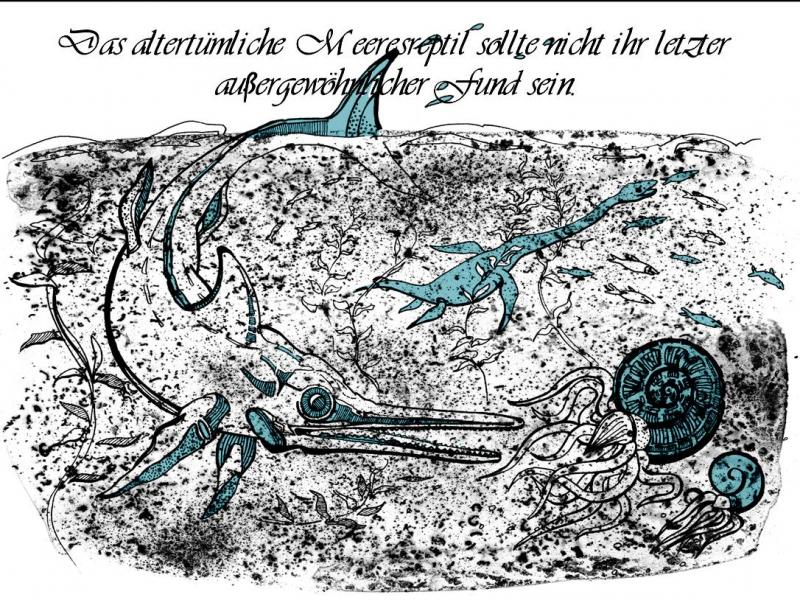
This ancient sea reptile would not be her last extraordinary discovery.
This ancient sea reptile would not be her last extraordinary discovery.
Drawn by Nika Korniyenko , 2014.  This work is licensed under a Creative Commons Attribution-NonCommercial-NoDerivatives 4.0 International License.
This work is licensed under a Creative Commons Attribution-NonCommercial-NoDerivatives 4.0 International License.
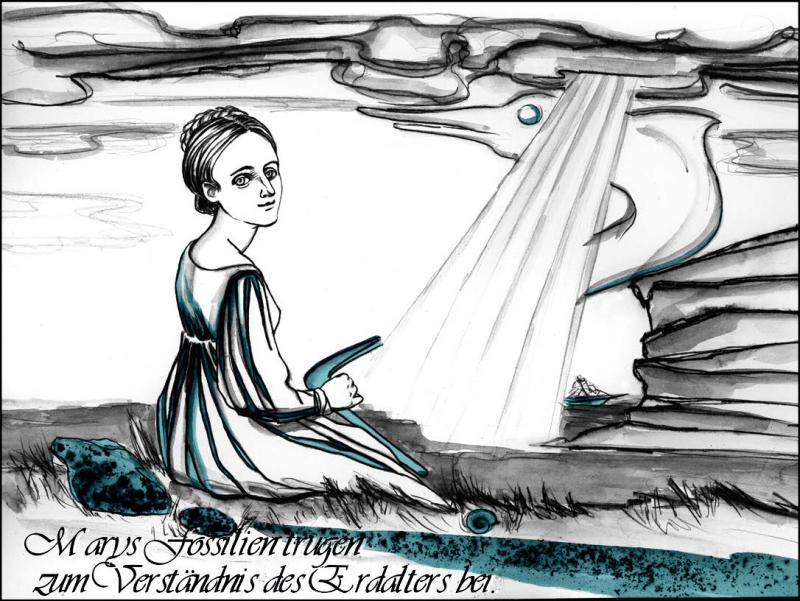
Mary’s fossiles contributed to the understanding of the Earth’s age.
Mary’s fossiles contributed to the understanding of the Earth’s age.
Drawn by Nika Korniyenko, 2014.
 This work is licensed under a Creative Commons Attribution-NonCommercial-NoDerivatives 4.0 International License.
This work is licensed under a Creative Commons Attribution-NonCommercial-NoDerivatives 4.0 International License.

A new squad of geologists discovered more and more deeper and older layers of the Earth.
A new squad of geologists discovered more and more deeper and older layers of the Earth.
Drawn by Nika Korniyenko , 2014.  This work is licensed under a Creative Commons Attribution-NonCommercial-NoDerivatives 4.0 International License.
This work is licensed under a Creative Commons Attribution-NonCommercial-NoDerivatives 4.0 International License.
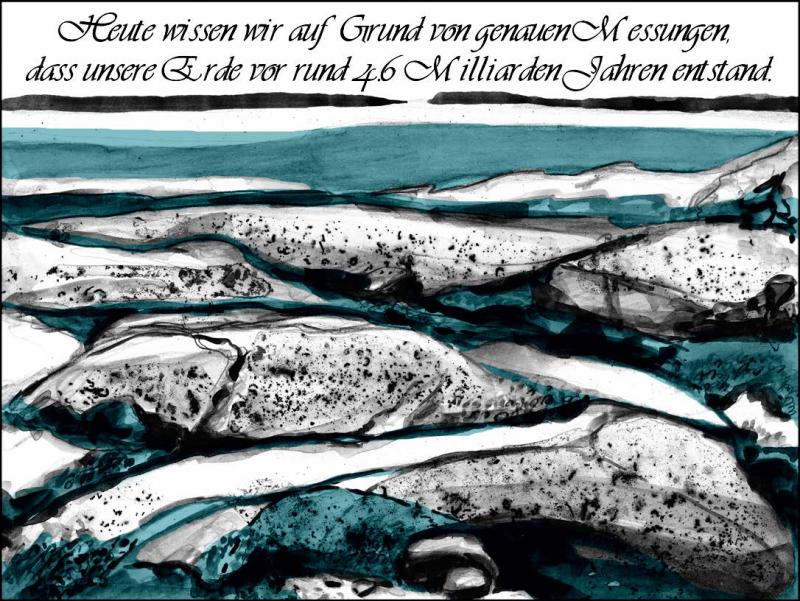
Today we know through exact measurements that our Earth is about 4.6 billion years old.
Today we know through exact measurements that our Earth is about 4.6 billion years old.
Drawn by Nika Korniyenko, 2014.
 This work is licensed under a Creative Commons Attribution-NonCommercial-NoDerivatives 4.0 International License.
This work is licensed under a Creative Commons Attribution-NonCommercial-NoDerivatives 4.0 International License.
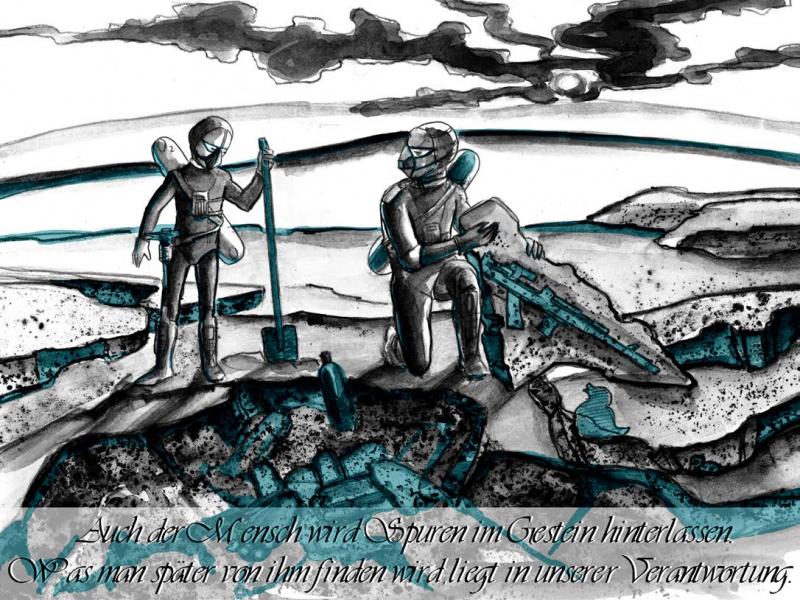
Humans will leave their mark in rocks. What will be found lies in our responsability.
Humans will leave their mark in rocks. What will be found lies in our responsability.
Drawn by Nika Korniyenko , 2014.  This work is licensed under a Creative Commons Attribution-NonCommercial-NoDerivatives 4.0 International License.
This work is licensed under a Creative Commons Attribution-NonCommercial-NoDerivatives 4.0 International License.
Artist’s comment
Mary Anning’s story rekindled my own childhood fascination with geology and the exploration of the distant past. I can imagine how much stimulation Mary got from her scientific work, which gave her strength in the face of the struggle for survival. For my illustrations, I chose pencil and watercolor to echo the style of late eighteenth and early nineteenth century diary drawings.
How to cite
Korniyenko, Nika. “Mass Spectrometry and Geological Eras.” Environment & Society Portal, Multimedia Library, 2014. http://www.environmentandsociety.org/node/6660/.
The comic also appears in Alexandra Hamann, Reinhold Leinfelder, Helmuth Trischler, and Henning Wagenbreth, eds., Anthropozän – 30 Meilensteine auf dem Weg in ein neues Erdzeitalter. Eine Comic-Anthologie (Munich: Deutsches Museum, 2014).

This work is licensed under a Creative Commons Attribution-NonCommercial-NoDerivatives 4.0 International License.

